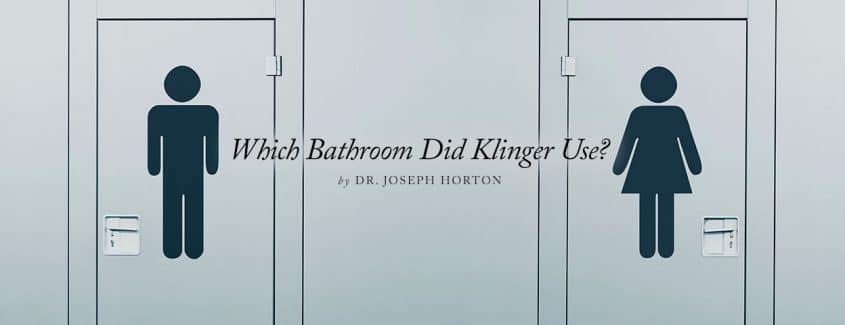
A solution to the social aspect of this challenge would be for transgender individuals to use single-stall family restrooms and changing facilities. There are many people for whom these restrooms are helpful, including people with small children and individuals with special needs who require assistance from a family member. However, advocates for transgender people typically oppose this solution. They claim that this makes transgender individuals feel excluded and that inclusion requires people to use the restroom, locker room, or shower that is consistent with each person’s gender identification. We are told that people who are uncomfortable with this should stop discriminating.
Even if it made sense for the federal government to dictate bathroom usage, the decree issued recently by the Obama administration would have missed the mark. While making the claim of inclusiveness and compassion, it disregards privacy and safety concerns of many citizens and does nothing to acknowledge the real challenge that transgender individuals face.
The claim is that one’s mental experience determines the truth. If one feels like a woman, one must be a woman; physiology and genetics do not matter. But one’s mental experience does not determine truth. A noncontroversial example is the Muller-Lyer Illusion. When viewing the two lines, one appears to be clearly longer than the other, even though the length of both lines is exactly the same. The feeling that one line is longer than the other is experienced, but this is misleading. It is possible to have powerful and persistent feelings that are objectively false. Similarly one’s gender identity does not determine the truth. Gender is biologically determined. Surgery and hormones may change external appearances, but the genetic reality remains.
In other mental-health contexts, we readily accept that people’s mental experiences may not reflect reality. People with anorexia believe they are fat despite being dangerously underweight. It would be cruel, not helpful, to agree with people who have anorexia that they are fat. People with depression often feel worthless. Yet we do not assure people with depression that they are in fact worthless. We help people with depression to recognize their worth.
People with gender identities that do not match their biology should be treated with compassion and respect. They too are people of value. They are experiencing genuine pain and confusion. In Sweden, where most citizens are open and accepting of the belief that gender is psychological rather than biological, a 30-year longitudinal study has been completed. Individuals who underwent sex reassignment had a much higher suicide rate and were more frequently admitted for inpatient psychiatric treatment than the general population. Transitioning to the gender with which they identified did not eliminate pain for these individuals, even in a tolerant culture. In the United States, Johns Hopkins University pioneered sex-change surgery, but discontinued it decades ago because it failed to resolve the inner struggles of those who made the transition. There are many people who have transitioned to presenting as another gender who have failed to find healing and regretted the transition (see www.sexchangeregret.com).
Americans loved the Max Klinger character. We would have loved him even if he really struggled with gender dysphoria. One way we can love real people who are transgender is to provide restroom and locker-room facilities that meet their privacy needs while respecting the privacy needs of others. But addressing privacy needs fails to address the mental-health challenge. Thus, also critical is promoting mental-health services and research to help those who do indeed suffer. Quality, evidence-based therapy should be available. Assuming that personal experience is always truth is inconsistent with promoting mental health and creates larger societal problems; claiming personal experience as truth does not provide healing for many with gender dysphoria.



